Tuesday, 15 March 2016
The rebirth of the Syrian Arab Army
For the first four years of the war, the Syrian Arab Army had to face up to a considerable influx of poorly-trained but well-equipped foreign mercenaries while having been unable to update its own equipment since 2005. But times have changed. Thanks to Iranian-trained militia and the supply of modern Russian material, it now has the capacity to win back the land it has lost. For the last two months, it has been progressing ceaselessly
After five months of air strikes by the 70 Russian planes based in Syria, many military analysts are wondering why the Syrian Arab Army has so far been able to win back only a small part of the territory occupied by the jihadists. They are making a totally inappropriate comparison with the US army, which managed to occupy Iraq in only 42 days – with the aid of 1,800 combat aircraft and 380,000 soldiers.
During the five years of war, the frontiers with Turkey, Jordan and Israël became crossing points for between 100,000 and 250,000 Islamist mercenaries (recruited and trained by Saudi Arabia, Qatar, the United States and Turkey) who opened several fronts, thus forcing units of the Syrian Arab Army to disperse in small groups across the country. At first, the Islamists mounted surprise attacks against the barracks of the Syrian Arab Army and police headquarters. The reaction of the Syrian Arab Army was late and clumsy, using only troops from the 104th Brigade of the Republican Guard and the 4th Mechanised Division. The success of the first phase of the «rebel» attacks spread quickly, mainly because of their perfect knowledge of the vulnerabilities of the Syrian Arab Army. The jihadists’ planning was handled by military instructors from the Turkish Special Forces (the Bordo Bereliler, or «Maroon Berets») and Saudi Arabia.
During the first three years of the war, the Syrian Arab Army, which had prepared for a classical war against its neighbours, but not an asymmetrical war, demonstrated not even elementary tactical intelligence, adopting inadequate positions with little or no space between them, without covering fire between the elements of their positions, and without effective friend-enemy identification techniques, etc. The Syrian Arab Army had neither pilotless reconnaissance planes (drones) nor satellite images, unlike the jihadists, who had access to NATO information. Besides this, the jihadists had construction equipment which had been imported earlier, such as drilling machinery used for the rapid construction of tunnels, while the Syrian Arab Army had no means of detecting them. Operations were mounted which surprised Syrian troops, who were incapable of reacting to the massive infiltration of terrorists, and many bases and weapon and ammunition stockpiles were captured. Consequently, the Syrian Arab Army were unable to ensure even elementary combat or preventative measures, or predict in advance the best method for planning the war.
An improvement of the tactical procedures for the assault groups of the Syrian Arab Army, and their successful implementation, which enabled swift manoeuvering, was obtained thanks to the use of Shahed-129 pilotless reconnaissance planes furnished by Iran.
Russia supported the Syrian government from the beginning, both politically and diplomatically, with sporadic deliveries of weapons and training courses, but in the autumn of 2015, Russian aid was distributed «à la carte», and supplies increased exponentially. The Syrian Arab Army quickly mastered these new weapons.
The period during which the Syrian Arab Army sacrificed its territory and fought exclusively to protect its civilian population from the jihadists is now over.
Early in the war, the Syrian Arab Army was equipped only with Chinese QGF-02 helmets. Soldiers from the Republican Guard and the Special Forces wore TAT-BA-7 bullet-proof jackets. Individual armament consisted of automatic AK-47 rifles (or Chinese 56-type variants). The absence of night-vision equipment and binoculars with residual light intensification was also a serious handicap.
Although in 2005, Syria had opted for the modernisation of individual equipment («Soldier of the Future»), until the start of the war this material had not been bought, due to the embargo which hung on the suspicion of Syria’s part in organising the assassination of Rafic Hariri. The equipment chosen was the Russian night observation system (Baighiş 6), and the assault rifle AK-74M. With the arrival of Russian instructors, most units of the Syrian Arab Army were equipped with 6B45 ballistic protective jackets, helmets in Kevlar 6B7, and AK-74M or AK-104 automatic rifles with telescopic sights and GP-30 grenade launchers. The Russians equipped the Syrian Arab Army with modern night-vision systems, AGS-17 thermobaric grenade-launchers, and 6G30 grenade-launchers (40 mm calibre).
During the five years of war, the Syrian Arab Army suffered heavy losses, greater than during their wars against Israël – much military equipment was either destroyed or captured by the jihadists, and a number of sites fell under jihadist control. This evolution was characterised over 75% of the Syrian territory by the cruel execution of captured soldiers and Republican civilians. Consequently, the replacement of these important losses by the Syrian Arab Army (at least 40,000 soldiers, or 10% of their number) was far more difficult than that which had been planned in terms of peace-time mobilisation. Fearing for their lives, 130,000 conscripts failed to register for military service, so that only 270,000 men presently serve under the flag.
In these circumstances, the Syrian Arab Army had to rely on auxiliary units composed of older volunteers, most of the time on the territorial principle. Fundamentally, in the areas prone to rebel attacks, there existed only local defence groups without coordination with the professional units of the Army – these groups were poorly-armed, without adequate physical training, without weapons training, and without any command structure which had received military school training, and had only a minimal understanding of the principles which must be applied in combat. These local defence groups, animated only by their patriotic enthusiasm, suffered significant losses.
As the situation evolved towards an offensive force, the Syrian Arab Army introduced these local defence groups to an intensive programme of tactical training, concentrating on urban guerilla techniques with live firing, marches, and basic notions of engineering and pyrotechnics. An aerial bridge was organised between Damascus and Tehran, in order that Syrian volunteers could receive training from the Iranian Bassijis, as the combatants of Hezbollah did and still do. For the first time, the Iranians trained not only Shia fighters, but especially Sunnis and Christians.
The Syrian Special Forces had been formed and trained by the Egyptian army in the 1960’s, after a programme developed by British commandos for units of light infantry who had parachute training. At the start of the war, the Syrian Arab Army had six independent battalions of Special Forces and another parachute battalion, the 104th Brigade of the Republican Guard.
In May 2014, a group of commandos called the «Protective Lions» was created, subordinate to the 4th Mechanised Division which operated in the North of Syria. At the beginning of the war, the equipment of the Special Forces units was as inefficient as that of the rest of the Syrian Arab Army, and the Syrian commandos had had no further experience of counter-insurgency urban combat since Beirut in 1982. At that time, the Syrian commando units were equipped with RPG-7 anti-tank grenade launchers and 9K111 Fagot and Milan-1 anti-tank missile systems, which caused extensive damage to Israëli tanks.
The situation improved with the arrival in Syria of Iranian instructors from the al-Quds Force (better equipped and well-trained) and combatants from the Libyan Hezbollah, who have great experience in urban warfare. Let’s not forget that the Iranian Special Forces had been created and trained by their US equivalent and by the British Special Boat Units during the reign of Shah Mohammad Reza Pahlavi.
The CQB and FIBUA Commandos of the Lebanese Hezbollah, armed with modern anti-tank missiles (9M113 Konkurs, 9M131 Metis M, 9M133 Kornet) and anti-tank grenade launchers (RPG 7V, RPG-29), acquired a solid experience of asymmetrical tactics and urban guerilla warfare in 2006, against the Merkava tanks of the Israëli army. They developed some extremely effective new tactics in anti-tank combat.
When the Russian Spetsnaz instructors arrived in Syria, everything was analysed and reviewed on the basis of principles of action and clear rules. Although Iran had invested a lot of money in equipment for the Special Forces, it was not state-of-the-art material, like that of the Russians. Recent photos of the Syrian Special Forces show equipment which is exactly the same as the Russians - fire-proof camouflage uniforms of the MultiCam type, FAST Ops-Core ballistic helmets, with integrated optoelectronic systems, night-vision systems, hoods, bullet-proof jackets and quality boots, rifles with British Accuracy International AWM telescopic sights (and silencers), or else AK-74M’s equipped with telescopic sights and Alpha 7115 laser range-finders and automatic AGS-30 grenade-launchers, Pecheneg machine-guns, etc. Progress in the training and equipment of Syrian commandos with modern weaponry has been noted in the recent operation for the recuperation of the Khanasser-Ithriyah road, which is the only supply route for pro-government forces in the province of Aleppo.
Combat in urban areas is unthinkable without the support of numerous marksmen, who must be trained and equipped with modern weapons. At the start of the war, in the absence of snipers and observation points on the buildings, suicide bombers were able to choose their targets and blow them up, or enter with cars into the control points of the Syrian Arab Army, who had few snipers, and whose only equipment consisted of old model rifles with sights - Dragunov and DMR (a Chinese model from Norinco, copied from the old US M-14).
Later on, the Iranians furnished the Syrian Arab Army with a local copy of a sighted Austrian rifle, the Steyr HS.50, and the Russians supplied the modern Orsis T-5000 sighted rifle (7,62 mm calibre) and the sighted KSVK machine-gun (12,7 mm calibre). On the initiative of the Iranians and the Russians, a school for snipers was created for the Syrian Arab Army, with Lebanese (Hezbollah), Iranian, and Russian instructors. Russian snipers are the best in the world, thanks to their weapons, camouflage, and training centres. The key motto for Syrian snipers had to be «become invisible and see others without being seen.»
During the First World War, when it was invented, the aim of the tank was to force and break down enemy barricades and lines of defence, thanks to protective armour, fire-power and great mobility. Today, anti-tank units equipped with missile systems are much less expensive than tank units, whose action becomes more difficult in an environment saturated with anti-tank technology. Tanks which are sent to re-establish order, without extensive research into the action perimeter and infantry support, often have to operate in village centres, where they are ambushed by surprise, and come under fire from portable grenade-launchers and anti-tank missiles. Tens of thousands of US BGM-71 anti-tank Tow missile systems, Franco-German Milan-2’s and Croatian M 79 Osa rocket-launchers were secretly introduced into Syria by the intelligence services of Turkey, Saudi Arabia, France and the United States.
Syrian tanks have no ERA-type (Explosive Reactive Armour) protection plates mounted on the front and the turret, nor systems which blind the guidance systems of anti-tank missiles, nor active-type protection systems, with interception captors capable of exploding anti-tank missiles before they reach the armour. Because of these missing elements, Syrian tanks have often been breached with single direct shots. After having been destroyed or damaged, hundreds of tanks of the Syrian Arab Army had to be adapted, soldering on protective plating, and after that, mounting ERA-type plates to neutralise the effect of cumulated shots.
With the arrival of Russian military instructors in Syria, they also noted that one of the Syrian Arab Army’s major errors was to abandon their damaged tanks. The Russians noted that most of them were repaired by the Turkish military specialists who were overseeing the jihadists, or used in fortifications, as fixed artillery batteries. As a result, the Syrian Arab Army multiplied its auxiliary towing and evacuation units for damaged tanks, as well as its repair units.
At the beginning of 2016, the Russians delivered about twenty T-72B3 and T-90 MS tanks to the Syrian Arab Army which had effective reactive protection against US BGM-71 Tow anti-tank missiles. The T-90 MS was used in the composition of advance detachments to pierce the defences of jihadist positions, according to what was observed in February 2016, during the offensive on the the village of Kuweira, near Aleppo. However, while the T-90 MS tanks were integrated into the Syrian Arab Army, they were paid for by Iran and are piloted by Iranian teams.
Apart from the tanks taken from the Syrian Arab Army, the Islamists have received a large number of armoured vehicles with platforms for machine-guns, rocket-launchers, cannons and small-calibre weapons, which afford them great mobility and the benefit of surprise. Smart weapons are necessary to neutralise targets in a defined area, and the Syrian Arab Army did not have them. The Russians gave them reconnaissance systems for the «PRP-4A Argus» expeditionary artillery, which enables them to determine the coordinates of enemy tanks and artillery, as well as isolated groups of enemy fighters once they have opened fire. The distances are automatically calculated by two laser range-finders. As well as that equipment, the Syrian Arab Army was offered TOS-1 « Buratino. » launchers for thermobaric projectiles (220 mm calibre), with a launch cadence of 24 projectiles in 7-15 seconds. The surface covered by a salvo of TOS 1 projectiles is 200 x 400 metres.
With the arrival of Russian instructors in Syria, a question arose concerning the delivery to the Syrian Arab Army of Krasnopol KM-2 laser-guided missiles. The system requires an operator for the armoured vehicle-mounted LTD (Laser Target Designator) spotting of the target. Once within a range of 2 kilometres by 1.6 kilometres in the area of the target, the Krasnopol missile is guided by laser to the marked target.
Until the arrival of the Russian contingent, the Syrian planes were not equipped with high-precision guided weapons which could assure support for ground troops. They used mainly 57 mm calibre rockets and FAB-50 and FAB-100 bombs, launched in a dive at 1,500 to 3,000 metres. At that height, Syrian planes were vulnerable to fire from Islamist artillery, either 23 mm and 30 mm calibre, and also to portable ground-air missiles (MANPADs), which explains the numerous losses suffered by the Syrian aviation. During this time, 21 Su-24MK bombers from the Syrian Arab Army were updated in Russian aeronautical factory N° 514 ARZ in Rzhev, and re-configured to Su-24M2 standards, equipped with systems integrating navigation and precision weapons-guidance (PNS-M), the same as the Russian aviation from the air base at Hmeymim. In 2015, Russia had supplied the Syrian aviation with state-of-the-art motors and avionics in order to raise 64 MiG-23BN/MLD’s to the standard of their MiG-23-98’s.
These MiG-23’s have OLS-M LANTIRN-class equipment for night navigation, infra-red detection of terrestrial targets and the guidance systems for several types of smart weapons, such as those used by Russian bombers deployed in Syria. As of now, Syrian Su-24 and MiG-23’s are able to execute precision bombing missions by day or by night, at altitudes which are out of range of portable ground-air missiles. In particular, they used penetration bombs to destroy the underground headquarters that the jihadists had built in many different areas, and also to hit ground troops, and therefore, for more than a year, the Syrian Arab Army has no further need of barrels of explosives dropped from helicopters, which in any case would have been destroyed by MANPADs.
The views expressed in this article are the sole responsibility of the author and do not necessarily reflect those of the Blog!
Labels:
Al Qaeda,
ISIL,
Russia,
Syria,
War on syria
Subscribe to:
Post Comments (Atom)
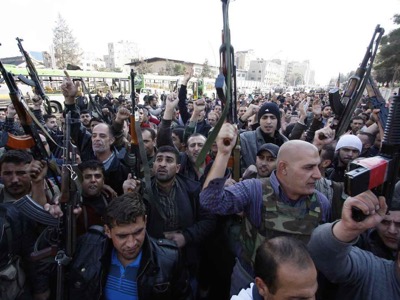
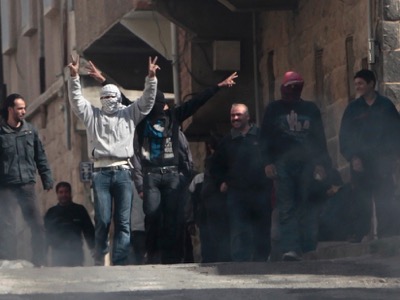
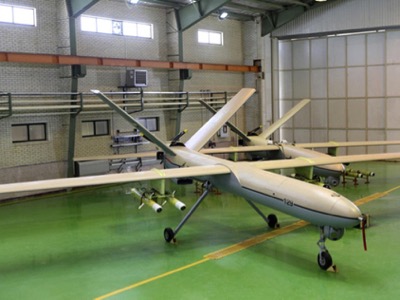
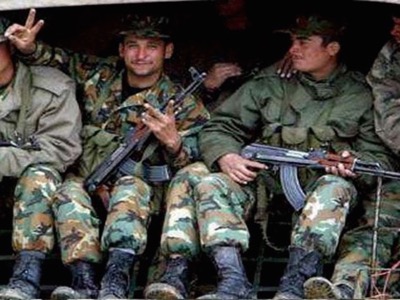
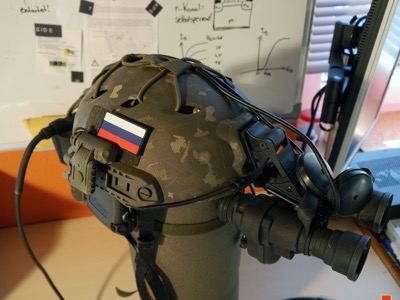
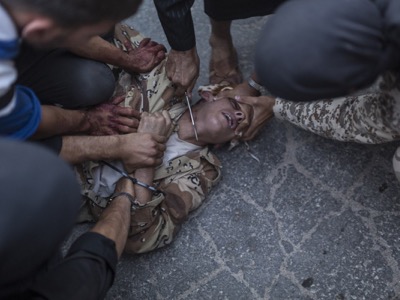
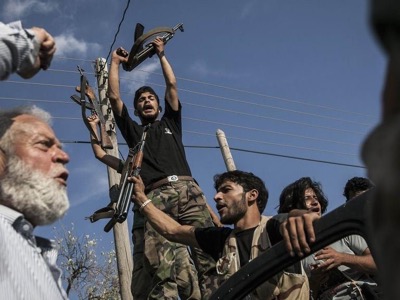

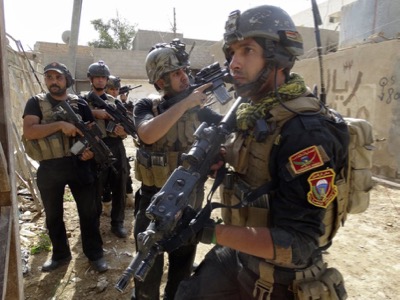
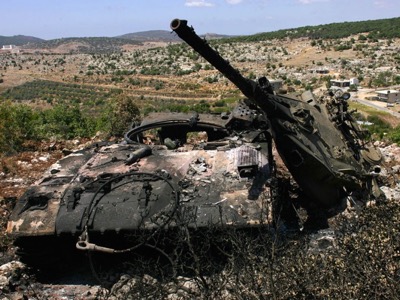
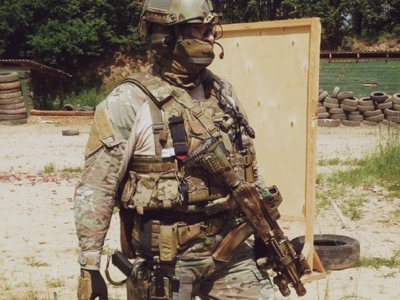

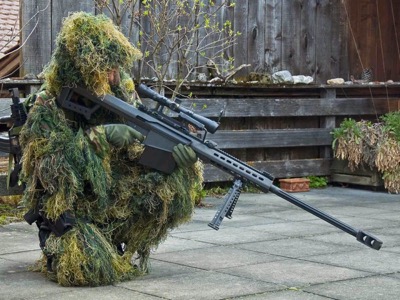

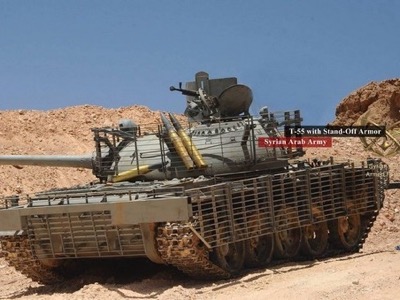
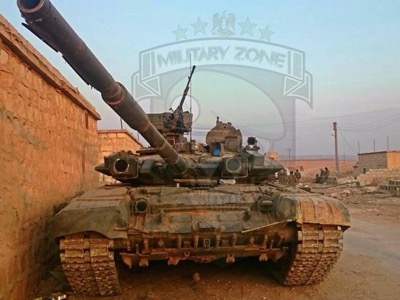
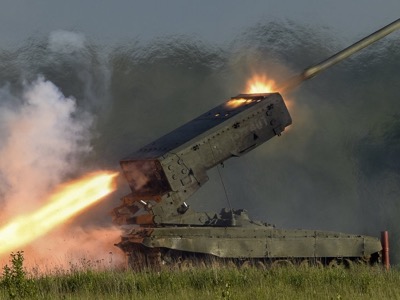
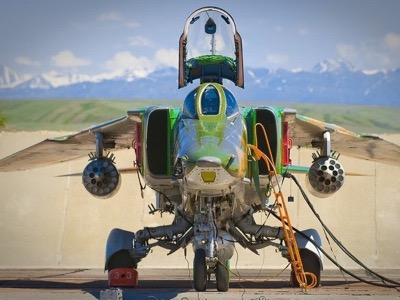













No comments:
Post a Comment